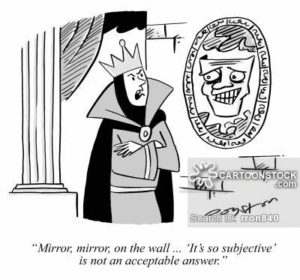Judging Art
What is Christian art? Is it simply art that a Christian produces? Is it art with a Christian theme? Our focus should not be “Christian” art, but simply ‘good art’. We need not insist on overtly religious themes for art to uphold a Christian worldview. The Christian’s goal in making art is to produce something that is beautiful, good and true. Even unbelievers can produce art that essentially upholds Christian concepts like the wages of sin or reaping what one sows (e.g., “Macbeth”). You don’t have to be a believer to observe and represent the world accurately or even from a generally Christian point of view. Interestingly, Paul quotes from pagan poets (Acts 17:28) in his effort to communicate the gospel to the pagan philosophers on Mars Hill.  Paul obviously had read the works of pagan writers. Similarly, the Reformers (Luther, Calvin) were thoroughly trained in the classics of literature and philosophy. Pagan sources are generally wrong when they speak about God, but not always. Puritan writer John Milton’s great poem, Paradise Lost, retells the story of the fall of Satan and of mankind. In it he alludes to about 1,500 authors, some Christian but many pagan. So the attitude that prohibits access to anything not created by Christians is inconsistent with history and good sense.
Paul obviously had read the works of pagan writers. Similarly, the Reformers (Luther, Calvin) were thoroughly trained in the classics of literature and philosophy. Pagan sources are generally wrong when they speak about God, but not always. Puritan writer John Milton’s great poem, Paradise Lost, retells the story of the fall of Satan and of mankind. In it he alludes to about 1,500 authors, some Christian but many pagan. So the attitude that prohibits access to anything not created by Christians is inconsistent with history and good sense.
Our own personal feelings and desires are not adequate or trustworthy sources of guidance for aesthetic decisions. We know that “the heart is deceitful above all things and desperately wicked” (Jer 17:9). We are naturally attracted to what is base, fleshly, worldly, shocking and/or titillating. And the more we indulge our base desires, the lower we sink in corruption. Thus, we cannot simply pursue what we like, because that aspect of our nature is seriously flawed. “There is a way which seems right to a man, but its end is the way of death” (Pr 14:12). We must allow God to guide our aesthetic choices. Too many Christians today, unfortunately, buy into the relativism of the world when it comes to aesthetics, consuming anything and everything.
The real question is whether the art we use is good or bad art, beautiful or ugly, symphony or cacophony, order or disorder. Christians ought to appreciate good art because doing so is an exercise of the divine nature. The form of art can be good or bad. For example, much modern art is formless and chaotic. What is this expressing about the artist’s understanding of the world? If he is suggesting that the universe is ugly, chaotic and random, we would have to disagree. That’s bad art because it is not true. Some art may truly represent an ugly, immoral, or corrupt image, but such art would not be good or beautiful. Paul tells us to “think about that which is true, honest, just, pure, lovely, of good report, virtuous, and praiseworthy” (Phil 4:8). We must be concerned with such values because they reflect characteristics true of God. Many things in nature are beautiful, and many things that man makes are also beautiful. God is good, true and beautiful, and Christians should value things that share those characteristics. What God is determines what is good and beautiful and true. All things beautiful find their source and foundation in the character of God himself. He is the norm for judging what is good, true and beautiful.
What is this expressing about the artist’s understanding of the world? If he is suggesting that the universe is ugly, chaotic and random, we would have to disagree. That’s bad art because it is not true. Some art may truly represent an ugly, immoral, or corrupt image, but such art would not be good or beautiful. Paul tells us to “think about that which is true, honest, just, pure, lovely, of good report, virtuous, and praiseworthy” (Phil 4:8). We must be concerned with such values because they reflect characteristics true of God. Many things in nature are beautiful, and many things that man makes are also beautiful. God is good, true and beautiful, and Christians should value things that share those characteristics. What God is determines what is good and beautiful and true. All things beautiful find their source and foundation in the character of God himself. He is the norm for judging what is good, true and beautiful.
What is Beauty?
Most people would probably say that “beauty is in the eye of the beholder,” and that each person must define it for himself. There are no ultimate standards for beauty (or truth),  many would say. However, from a biblical point of view, we must affirm that beauty is a reflection of the character and ways of the Creator. A God-centered view of beauty locates that quality in certain characters inherent in nature or in God himself. If we reject an objective standard of beauty, it becomes no more than personal opinion, in which case everything goes. There is a kind of art that corresponds to norms found in the character of God that we ought to appreciate it (even if we don’t currently). If God is the foundation of beauty, and if there are norms of beauty found in the character of God, then we should understand these norms and embrace them for ourselves instead of relying on private preferences.
many would say. However, from a biblical point of view, we must affirm that beauty is a reflection of the character and ways of the Creator. A God-centered view of beauty locates that quality in certain characters inherent in nature or in God himself. If we reject an objective standard of beauty, it becomes no more than personal opinion, in which case everything goes. There is a kind of art that corresponds to norms found in the character of God that we ought to appreciate it (even if we don’t currently). If God is the foundation of beauty, and if there are norms of beauty found in the character of God, then we should understand these norms and embrace them for ourselves instead of relying on private preferences.
Several theories of beauty have been put forward.
- The Great Theory, which is the theory put forward by Plato, and Christianised by many ancient Christians. Beauty is harmony: a symmetry of parts, proportion, unity.
- The Pleasure Theory: beauty is what delights us.
- The Transcendental Theory: beauty is truth and goodness.
- The Theological Theory: beauty is the essence of God, or the glory of God, or God’s love within Himself.
In the end, we are best served with a definition that says, beauty comes from God and is like God. Knowing beauty is then like knowing God: repenting of what is unlike Him, and conforming ourselves to what is like Him. The form and the content of the art should display beauty.
Are there any exceptions to the “true, good and beautiful” rule about art? Is there any room for ugly, shocking art? Potentially, yes. For example, a true-to-life painting or photo of a crime or a battle may be quite shocking to behold. If some of the descriptions given in the Bible were depicted visually, they would no doubt present very gory, ugly, and even immoral scenes (e.g., Israel’s conquest of Canaan, Samuel hewing Agag in pieces, David’s view of Bathsheba, Jesus’ torture, Stephen being stoned). Death, destruction and deprivation are common in our fallen world and common even in the Bible, and images conveying those scenes are not necessarily off limits if depicted and viewed with maturity and thoughtfulness.
 – David De Bruyn, Professor of Church History, Shepherds’ Seminary Africa
– David De Bruyn, Professor of Church History, Shepherds’ Seminary Africa

